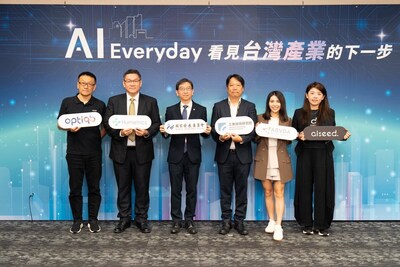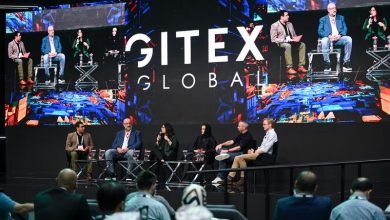
TAIPEI, Nov. 3, 2025 /PRNewswire/ — A news report from TNL Mediagene:
As the wave of Artificial Intelligence sweeps across the globe, discussions about its disruptive potential dominate laboratories and boardrooms alike. However, the true challenge lies not in the technology itself, but in translating this powerful force into tangible, real-world solutions. The recent “AI Everyday: Seeing the Next Step for Taiwan’s Industry” forum, hosted by the National Development Council (NDC) and concluded on October 17, sought to answer this core question. It unveiled a practical roadmap for Taiwan’s industries, shifting the focus from the technical “why” to the applied “how” of AI.
The Macro Vision: AI as an Enabling Force Across Industries, Not a Standalone Sector
“We must promote AI, but not for the sake of AI,” stated Richard Lee, CEO of the Asia Silicon Valley Development Agency (ASVDA) Executive Center, cutting straight to the core of industry promotion. He noted that ASVDA has accumulated nearly 300 smart application cases in recent years, leading to a profound realization: AI is not merely an independent industry. Instead, it is a formidable, enabling force that “penetrates” through semiconductor technology, sensing, networking, data, and applications, ultimately realizing commercial models across various scenarios.
The goal of Taiwan’s “AI New Ten Major Construction Projects” is not just to maintain Taiwan’s leadership and advantage in the semiconductor and AI industries, but to drive the transformation and upgrading of all other sectors, ensuring that every field benefits equally.
The AI Method: Perception, Generation, and Inference
Professor Yun Nung Chen from National Taiwan University’s Department of Computer Science and Information Engineering provided a clear methodology from an academic perspective. She broke down AI’s behavior into three pillars: Perception, Generation, and Inference.
Perception equips machines with “eyes and ears,” enabling tasks like facial recognition or medical image analysis.
Generation grants machines creative power, allowing them to craft personalized marketing copy for different customers or create Non-Player Characters (NPCs) in games that can engage in natural conversation with players.
Inference provides the ability to predict the future, spanning applications from forecasting e-commerce user purchase probability to accelerating drug screening in new drug development.
Professor Chen emphasized that in this new era of human-machine collaboration, humans act more like “supervisors,” needing to learn how to “give commands, review drafts, and correct errors” to AI. Citing the common example of an AI HR Assistant in a corporate setting, she illustrated that employees can use AI to check leave policies and complete applications. In this process, AI acts as an efficient subordinate, while humans intervene at critical junctures for supervision, handling the most crucial analysis, evaluation, and critical thinking.
She offered a gentle yet firm warning to workers navigating the transformation: “The future will not be one where AI replaces humans, but where people who use AI will replace those who do not,”.
Building Taiwan’s Defense Resilience with Indigenous Drone Technology
Monica Lee, Co-founder of Aiseed, shared her team’s journey in independently developing defense drones. They chose the demanding path of “independent R&D for critical software and hardware technologies,” successfully deploying the technology in real-world mission scenarios such as GPS interference and obstacle avoidance, from AI model training to actual flight tests.
She noted that startups in Europe and the U.S. are rapidly transforming the defense sector and firmly stated: “Taiwan should not be limited to OEM/ODM work. Taiwan plays a critical role in the global supply chain and R&D”.
Responding to Frontline Needs, Not Just Collecting Data
Facing the workforce shortage in an aging society, Hugo Lin, CEO of Humetrics, presented solutions directly from the front lines of care. Using under-bed sensing mats, their system collects raw data on elders—including getting out of bed, turning over, sleep quality, heart rate, and respiratory rate—which is then analyzed by a cloud-based AI model.
The core task of the AI is to act as a filtering brain, proactively identifying potential risks from the massive data stream, such as nighttime wandering, fragmented sleep, abnormal respiratory rates, or prolonged periods without turning over. Lin sharply pointed out: “The frontline doesn’t want to look at massive amounts of data; they want direct case suggestions and alerts”. This perfectly demonstrates how AI supports professional decision-making, ensuring technology truly serves the end-user’s needs.
The “Essential Need” Gateway: Bringing 3D Technology into Everyday Life
Why has traditional 3D content struggled to achieve mass adoption? Jye Lin, CEO of Optiqb, attributed it to content scarcity and high production costs. To overcome this, they developed a unique “screen protector + app” solution, centered around their proprietary AI algorithm engine.
This AI engine, leveraging visual tracking and a low-power architecture, can instantly convert existing 2D images on a smartphone into glasses-free 3D. Applications span film and entertainment, children’s education, and even real-time video conferencing. Their strategy is highly pragmatic: “3D may not be an essential need, but a phone screen protector is,”. By utilizing this ingenious gateway, their goal is to bring 3D from exhibition halls into daily life, making it an instantly switchable viewing option for everyone.
Future Echoes: AI, Ubiquitous When Technology Meets Demand
From indigenous drone technology for national defense and clinical decision-making in smart care, to the mass adoption of glasses-free 3D, these seemingly disparate fields all converge on one core truth: The value of technology is always determined by how many real-world problems it solves, and AI is the core of the next phase of applications.
Ultimately, the forum’s conclusion clearly answered the initial question. The future of AI is not about creating more dazzling technology, but about enabling it to “penetrate” every sector and become a capability as naturally pervasive as air and water. As CEO Richard Lee stated, the ultimate goal of AI is not just “Everyday,” but truly realizing the omnipresence of “Everyday and Everywhere”.
View original content to download multimedia:https://www.prnewswire.com/news-releases/beyond-the-cloud-how-taiwans-industries-are-orchestrating-the-real-world-symphony-of-ai-implementation-302602294.html
SOURCE TNL Mediagene




